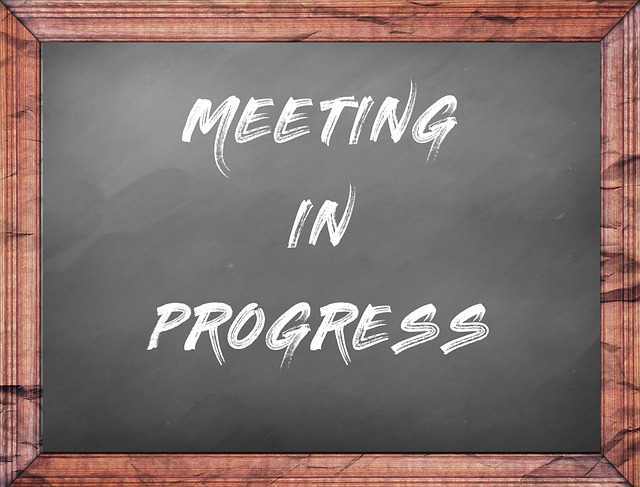
In Uncertain Times, Nonprofits Must Keep Up With Legal Compliance
04.11.2025 | Linda J. Rosenthal, JD

As nonprofit attorneys, we often get asked by clients for guidance on governance and resources for nonprofit boards of directors to utilize.
“Great board leadership takes intentionality and effort. BoardSource is here to help.”
That’s a tagline on the website of one of the nonprofit sector’s most valuable training and research resources – and who we typically direct clients towards. Established over three decades ago, Washington, D.C.-based BoardSource is a 501(c)(3) organization led by a distinguished and diverse board of directors, with guidance from a research advisory council of eminent scholars and experts.
“BoardSource’s work is grounded in a fundamental belief that boards are critical to organizational success.” It envisions “… a world where every social sector organization has the leadership it needs to fulfill its mission and advance the public good.”
It “has become the go-to resource for nonprofit boards and the recognized leader in the field of nonprofit governance.”
That’s why – in our current blog series on the importance of a harmonious relationship between the board chair and top executive of a 501(c)(3) – we showcased some of the voluminous information and valuable guidance available from BoardSource. See More On The Nonprofit Board-Staff Dance (June 9, 2022), updating The Delicate Dance of the Nonprofit Board and Staff (February 25, 2022).
But there’s more ….
We pointed out in the June 9th post that, among BoardSource’s many impressive offerings, there is a special website section devoted to Key Topics in Nonprofit Board Service. For each of 13 categories, it includes a self-contained dedicated page brimming with links to “guides, tools, templates, and infographics”; “publications: books and toolkits”; and “written resources: 101, 201, and 301-level.”
The first of these key topics happens to be The Board/Staff Partnership. “The partnership between the board and the executive leader is critically important to the success of the organization.” The BoardSource experts offer resources explaining how and why a “strong and healthy board-staff partnership provides flexible and resilient leadership that contributes positively to the organization’s overall impact.”
Guidance is also offered about the pitfalls of failing to take the right steps. That omission generally leads to a “… weak or dysfunctional partnership [that] impedes the effectiveness of both the board and the executive, and puts the organization at risk in a number of ways – lack of strategic alignment or direction, executive turnover, a toxic organizational culture; the list could go on and on.”
Tacked almost nonchalantly onto the bottom of the Key Topics in Board Service cover page is this brief and casual comment: “BoardSource has also codified a set of Recommended Governance Practices, which are informed by our research and years of experience working with boards. These guidelines may provide a useful starting point for key decisions about governance practices and a discussion about opportunities for change.”
That’s quite an understatement. As it happens, the Recommended Governance Practices is a significant contribution to BoardSource’s treasure trove of expertise. (And BoardSource tweaks a few of them specifically for inclusion on the The Board/Staff Partnership page.)
Before plunging into an overview of the Recommended Governance Practices, it may be helpful if you peek at the full list of the 13 Key Topics in Nonprofit Board Service. They are:
It’s hard to imagine how any 501(c)(3) organization – large, medium, or small; with or without paid staff – could not benefit from this line-up of carefully curated experience and advice.
The peek being over, recall also that each of these sterile topic headings is attached to its own dedicated website page overflowing with information and guidance.
Returning, now, to the Recommended Board Practices, the 6-page PDF booklet (link here) begins: “The nonprofit boards best equipped to lead their organizations are self-aware, function in constructive partnership with their chief executives, and are committed to continually improving their performance. Boards can improve their effectiveness by the intentional adoption of good governance practices.”
This publication “is the product of … BoardSource’s decades of experience working with tens of thousands of nonprofit board leaders and conducting extensive research on board practices.”
Describing these recommended practices as a “roadmap for boards toward becoming a strategic asset for their organization,” the writers explain they are “arranged in three categories….: ‘essential, leading, and compliance’ practices.”
In each category, there are separate listed items, each with a declarative subtitle, and followed by an explanation.
Items E1 through E8 are: Meeting Attendance; Term Limits; Strategic Board Recruitment; Strategic Planning; Budget Approval; Chief Executive Job Description; Chief Executive Evaluation; and Audit.
Example: E7: “Chief Executive Evaluation. The board must evaluate the chief executive’s performance annually; the evaluation should be written and involve the full board.”
Comment: “A formal evaluation, based on well-defined and mutually agreed upon expectations, benefits and protects both the chief executive and the board. Even if the board chair or a committee leads the evaluation, the full board must participate by being given the opportunity to provide feedback, approve the final evaluation, and ensure all compensation recommendations are appropriate. The evaluation should include 360-degree feedback from the organization’s leadership team so the board has an opportunity to gain additional insights from those working closely with the CEO on a daily basis.”
Items LP1 through LP16 are: Consent Agendas; Executive Sessions; Board Diversity and Inclusion; Board Evaluation; Board Orientation; Bylaws Review; Chief Executive Serving on the Board; Board Job Description: Managing Conflicts of Interest; Personal Giving; Board Retreat; Board Size; Committees; Executive Committee; Governance Committee; and Form 990 Posting
Example: LP7: “Chief Executive Serving on the Board. The chief executive should be an ex officio, non-voting member of the board.”
Comment: “The chief executive’s input in board meeting deliberation is instrumental and invaluable for informed decision making. However, to avoid actual or perceived conflicts of interest, questions concerning accountability, or blurring the line between oversight and execution, chief executives should be non-voting members of the board, unless not permitted by law.
Items C1 through C5 are: Meeting Frequency; Executive Compensation; Review of IRS Form 990; Document Destruction and Retention; and Whistleblower Process
Example: C2: “Executive Compensation. The board must formalize a process for setting appropriate compensation for the chief executive and approve the compensation package.”
Comment: “The board needs to establish well-defined guidelines on how to determine appropriate compensation for the organization’s chief executive. If the board offers too little, it could lose the chief executive to competing organizations; if it offers too much, it risks providing excess benefits and subjecting itself and the organization to intermediate sanctions. The board should follow the IRS’s safe harbor measures and rely on comparative data, have the compensation decision determined by independent board members, and contemporaneously record the decision-making process. The full board should approve both the process and the resulting compensation package.”
There’s a lot to digest here all at once. It’s best reviewed in much smaller chucks.
And speaking of more manageable bits, let’s circle back to the precise theme raised in our “dancing” posts about crafting a workable relationship between the board chair and the chief executive.
The Board/Staff Partnership website page applies the gist and intent of the Recommended Board Practices, paraphrasing it this way: “To cultivate the trust, respect, candor, and communication that characterize a healthy partnership between a board and staff, BoardSource recommends a number of key practices, including the following:
“Boards committed to adopting these [Recommended Board Practices] can find extensive information about them in BoardSource’s comprehensive library of resources and publications available at boardsource.org.”
As for the specific conversation about the board/staff “delicate dance,” there’s lots more to discuss.
– Linda J. Rosenthal, J.D., FPLG Information & Research Director
